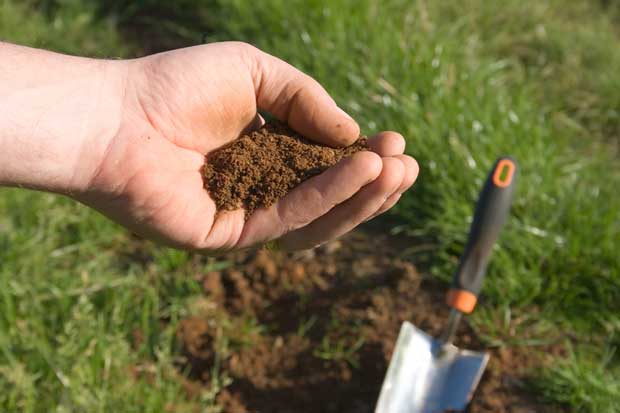The soil health check list

Is your soil in good condition? Check out our soil health check list below. Photo: Dreamstime.
You may think you know a good soil, but have you had a good sniff of it lately?
Words: Nadene Hall
A fertile soil won’t just look good, it will smell good too. To give your soil the once-over and make an assessment of it’s health, you’re going to need to get down on your knees.
1. SMELL IT
The more fertile a soil, the higher the amount of actinomycetes and the stronger the musty/earthy smell. It is unclear how reliable this observation can be for comparing soils but may be useful in comparing two treatments. As yet, no gas chromatography work (or probably even panel assessment) has been carried out to quantitatively compare such samples. Another aspect of soil smell is to test that the soil is not too sour (low pH due to unbalanced organic acids), and this can be quantitatively assessed by soil pH measurement.
2. CRUMBLE IT (IF YOU CAN)
The friability of a soil is a good sign (and cause) of the level of soil biological activity. The soil should feel nice and crumbly due to good aggregate structure.
3. LOOK AT THE COLOUR
Generally, as a soil improves under good management, its colour should darken due to the increased formation of dark brown to black soil humus. Earthworm activity in the subsoil can also be seen as the old worm burrows fill in with dark stable humus-soil particles.
4. COUNT YOUR WORMS
An easily quantifiable method of assessing the health of soil ecology is to count and identify the earthworms present. It is mostly a case of the more the better, and some species are better indicators of good soil conditions than others*. Care in interpretation would include the effect of time of sampling and temporary soil conditions as these will affect counts. Counts can be made of smaller soil animals but this becomes more of a laboratory job due to the size or the organisms.
5. TIME IT
Perhaps the most direct assessment of a soil ecology’s health is to test the rate at which litter is decomposed. This can be done by field observation of length of time for “aboveground” or incorporated crop residues to “vanish”.
* For information and identification of different worm species, go to http://soilbugs.massey.ac.nz/oligochaeta.php


